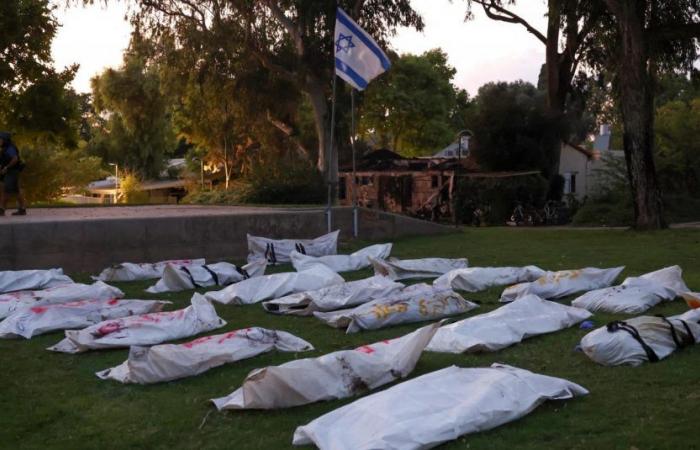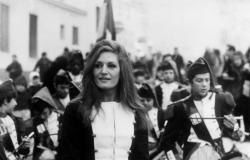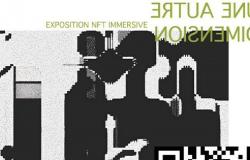A year ago, 3,000 Hamas commandos invaded Israel. They murdered 1,200 people and kidnapped 250. Israeli journalist Lee Yaron reconstructed the attack based on a hundred moving testimonies.
Since 2015, Lee Yaron (° 1994) has been one of the better-known and more activist investigative journalists at Haaretz, Israel’s most critical newspaper. She specializes in corruption files, social issues and the climate. She herself says that as a journalist she works by definition ‘from the bottom up’, from the perspective of the people who are affected by the policy.
In her book The attack on Israel. October 7. One hundred witnesses about Hamas terror attack she uses this technique ‘from below’ to give a voice to (the families and friends of) those affected by the Hamas attack. They are a hundred terrible testimonies. Men, women, the elderly, children, workers, partygoers, migrants: Hamas made little distinction. Women were treated particularly harshly, and that seems no coincidence.
Beastly violence
We’ll stick to one short fragment. The narrator is a certain Raz Cohen, a young visitor to the Supernova Sukkot Gathering festival, a rave party that turned into a bloodbath.
‘Through the bushes they saw a white Savana van coming towards them. Five men, in civilian clothes, got out about forty meters away. They all carried daggers, one even a hammer. There was a young woman with pale hair with them, they held her tightly. Raz Cohen watched as they took off her clothes and stood in a semicircle around her. Raz Cohen wanted to do something, but he knew he wouldn’t survive. The terrorists had weapons, he only had branches.
“One of the terrorists grabbed the woman by the neck and another put her hands on the van. They bent her over and started raping her. The others watched. Raz Cohen saw the terrorist stab her repeatedly while raping her. The woman stopped moving and screaming, but the terrorist continued to move inside her dead body.”
Shouldn’t a book that deliberately presents one side of the matter be read with the greatest caution?
Nearly 300 pages are filled with mostly beastly violence. Even for those who have followed the reporting closely, the testimonies in this book defy imagination. Yet this perspective is somehow uncomfortable. Hamas’ attack did not start the war in Gaza, let alone the Israeli-Palestinian conflict. Shouldn’t a book that deliberately presents one side of the matter be read with the greatest caution? Especially if the journalist herself once served in the Israeli Defense Force (IDF) – although that is not the result of a personal choice: in Israel there is mandatory military service for men (three years) and women (two years).
‘Child of a lost generation’
The foreword to the Dutch edition is by VRT journalist Rudi Vranckx. In it he unequivocally advocates giving the author credit. ‘This book is recommended for those who do not want to hide in the tunnel of their own right. Also from one’s own suffering.’
He points out that Lee Yaron ‘has always advocated democracy and the human rights of Israelis and Palestinians, Jews and Arabs. I can’t think of a better pen to capture this terrible episode from the twenty-first century.’
Lee Yaron himself calls himself a child of a ‘lost generation’. “Most Israelis and Palestinians have known nothing but this violence. Half of Israelis are under thirty, half of Palestinians in Gaza are under eighteen. I was born when there was no more hope, at the end of the reign of Israeli Prime Minister Yitzhak Rabin, a year after the signing of the first Oslo Accords and a year before he was assassinated.’
Rabin was murdered by a Jewish ultranationalist, but in those years Hamas also made a name for itself for the first time. Yaron has no sympathy or understanding for Hamas: ‘It was the official end of the First Intifada, a series of terrorist attacks on Israelis by a newly founded Islamic terrorist organization, Hamas. Out of Egypt’s Muslim Brotherhood had emerged a Palestinian branch that was almost as single-mindedly devoted to destroying Yasser Arafat’s secular Fatah party as it was to destroying Israel itself. Hamas’ charter explicitly called for the elimination of the Jewish state. I was two months old when a suicide bomber blew himself up in a bus full of passengers, a few meters from where my mother was standing, with me in her arms.’
Rudi Vranckx shows some empathy with the perpetrators of Hamas. Perhaps he was familiar with some of them: ‘Ten years ago I visited Palestinian children with a psychologist. They had known only a childhood of loss, horror and sadness. Some could no longer speak due to the trauma. Others closed themselves off in a world of anger. On October 7, I wondered if some of those young people were riding their motorcycles in that outbreak of frenzy and destruction.’
Left-wing kibbutzim
Fortunately, Lee Yaron is not blind to the Palestinian suffering either: ‘When I write this book, according to the Gaza Ministry of Health, more than thirty thousand Gazans are already dead in this war. Many of those who lost their lives are innocent civilians, including thousands of children. According to the United Nations, nearly two million Gazans have been displaced and about 70 percent of all homes in the territory have been destroyed, as well as most hospitals, markets, schools and mosques. Men, women and children who have nothing to do with Hamas’ crimes are now paying the highest possible price.”
“Hamas terrorists destroyed the very communities that did more than anyone else to bring peace between the two peoples.”
Lee Yaron
Investigative journalist at the Israeli newspaper Haaretz
What bothers Lee Yaron to a great extent – and for which she has extra sympathy for the victims – is that, according to her, the towns, villages and kibbutzim in this border region were very deliberately targeted by Hamas, and not just because the affected towns, villages and kibbutz were once close to Gaza and therefore the easiest targets were:
‘The kibbutzim along the border were mainly established as socialist communities that to this day support left-wing and center parties and push for the two-state solution. If the Israeli elections were determined solely by the votes of some of these kibbutzim, Netanyahu’s Likud party, whose coalition now includes some of the most extreme players in Israeli politics, would likely not have met the electoral threshold to enter the Knesset.’
A number of the affected kibbutzim can even be called ‘committed’. Yaron: ‘The members of Kibbutz Be’eri voluntarily transported Palestinian patients to Israeli hospitals and donated money annually to families in Gaza.’ On 7/10, one in ten Be’eri residents was murdered or kidnapped, many of them elderly and children. Most houses were destroyed or set on fire. Her conclusion: “Hamas terrorists murdered and destroyed the very communities that did more than anyone else to bring about peace between the two peoples.”
Palestinian stories
On the first anniversary of the Hamas raid, cautiously optimistic conclusions cannot yet be drawn, according to Lee Yaron: ‘Israelis and Palestinians have become blind to each other and deaf to each other’s grief. They no longer want or can see the pain in each other and the common loss. Every tragedy only serves to strengthen and thicken the walls that exist between us. Each side denies the other’s facts, feelings and right to grieve.’
Lee Yaron also struggles with it himself. Today she is able to chronicle the memories of those who suffered Hamas’ attack. The memories from Gaza will not come from her pen: ‘While I share the sorrow of the Palestinians and feel the weight of our intertwined history, I also know that the Palestinian stories, especially now, are not the stories I need to tell. I humbly wait to read the book of my Palestinian colleagues, who will surely tell the stories of the innocent Gazans who have suffered and died because of my country’s response to the violence of their leaders.”
Lee Yaron, The attack on Israel. October 7. One Hundred Witnesses About Hamas Terror Attack translated by Petra van Canegem. With a foreword by Rudi Vranckx, Uitgeverij Horizon, 288 pages, 22.99 euros.







